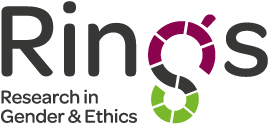The gendered health workforce: mixed methods analysis from four fragile and post-conflict contexts
It is well known that the health workforce composition is influenced by gender relations. However, little research has been done which examines the experiences of health workers through a gender lens, especially in fragile and post-conflict states. In these contexts, there may not only be opportunities to (re)shape occupational norms and responsibilities in the light of challenges in the health workforce, but also threats that put pressure on resources and undermine gender balance, diversity and gender responsive human resources for health (HRH).
We present mixed method research on HRH in four fragile and post-conflict contexts (Sierra Leone, Zimbabwe, northern Uganda and Cambodia) with different histories to understand how gender influences the health workforce. We apply a gender analysis framework to explore access to resources, occupations, values, decision-making and power. We draw largely on life histories with male and female health workers to explore their lived experiences, but complement the analysis with evidence from surveys, document reviews, key informant interviews, human resource data and stakeholder mapping.
Our findings shed light on patterns of employment: in all contexts women predominate in nursing and midwifery cadres, are under-represented in management positions and are clustered in lower paying positions. Gendered power relations shaped by caring responsibilities at the household level, affect attitudes to rural deployment and women in all contexts face challenges in accessing both pre- and in-service training. Coping strategies within conflict emerged as a key theme, with experiences here shaped by gender, poverty and household structure.
Most HRH regulatory frameworks did not sufficiently address gender concerns. Unless these are proactively addressed post-crisis, health workforces will remain too few, poorly distributed and unable to meet the health needs of vulnerable populations. Practical steps need to be taken to identify gender barriers proactively and engage staff and communities on best approaches for change.
By Sophie Witter, Justine Namakula, Haja Wurie, Yotamu Chirwa, Sovanarith So, Sreytouch Vong, Bandeth Ros, Stephen Buzuzi and Sally Theobald
